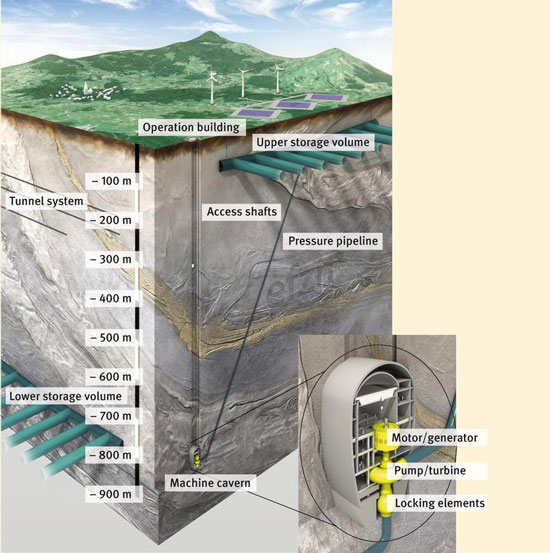| Apr 01, 2014 |
Using mines as pumped storage power plants
|
|
(Nanowerk News) Pumped storage power plants are firmly established in the German power grid: surplus electricity can be stored for a moment and then quickly supplied during a demand peak. The BINE Projektinfo brochure “Storing wind energy underground” (pdf) presents a concept of how to reuse abandoned ore mines as pumped storage power plants. This type of underground electricity storage could expand the storage capacity of the power grid considerably. Unlike aboveground power plants, larger landscape interventions would be avoided.
|
 |
| Structure of an underground pumped storage power station.
|
|
A conventional pumped storage power plant usually consists of two water reservoirs, hydro dams or lakes, between which there is a height difference that is as large as possible. If energy is to be stored, water is pumped from the lower reservoir to the upper one. When power is required for the grid, water flows back into the lower reservoir, powering a turbine. This storage principle can also be implemented in former mines. Using the example of the ore mines Grund in the northwestern Upper Harz and Pöhla in the Erzgebirge, the researchers developed a technical and environmental concept. In addition, they compiled reference values of economic efficiency and exploitable potential in Germany.
|
|
The comprehensive study was prepared by Energie-Forschungszentrum Niedersachsen and other academic partners from the fields of mining, mechanical engineering and environmental law.
|

